Steel yourself for metal guru Antony Gormley’s Royal Academy blockbuster
The British sculptor takes you through a room brambled with steel spindles, inside pitch-black tunnels, before platooning you in a room filled with seawater
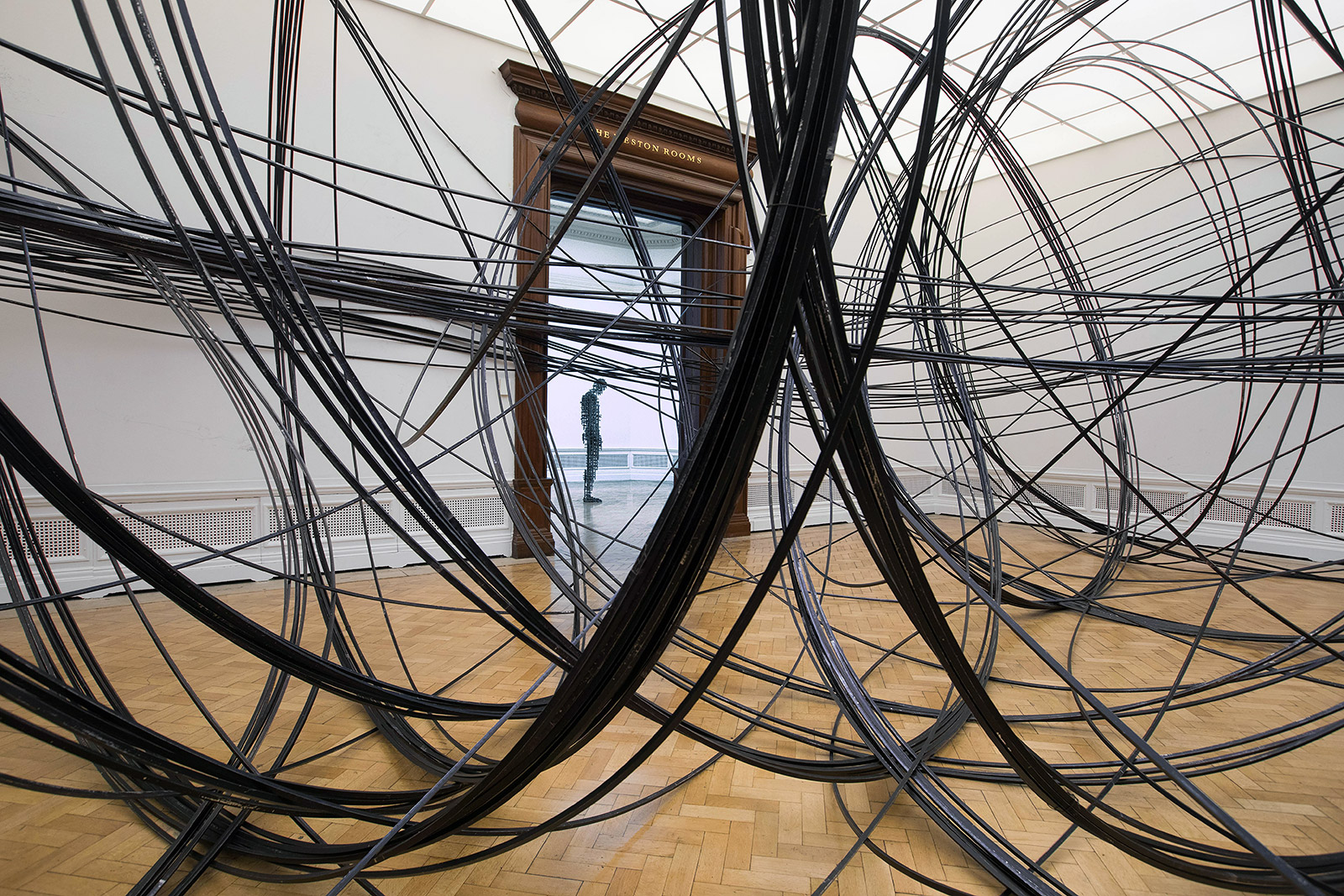
Antony Gormley’s blink-and-you’ll miss it Iron Baby (1999) greets the hoards of culture vultures already circling London’s Royal Academy of Arts, ahead of his anticipated self-titled exhibition. Its foetal form, cowering on the Annenberg Courtyard floor, snatches your breath as you enter the RA. ‘I just want to go and cover him up with a blanket,’ says someone. ‘It's going to be a trip hazard,’ jokes another. And so the tone is set for Gormley’s 17-room exhibition, that will literally and figuratively have you on the wrong foot.
Try to find a quiet time to experience it if you can. It’s how the artist – a student of Buddhist meditation – would no doubt want you to experience it. But, despite the crowds, a calming aura settles on each installation. It’s in part down to the Enlightenment-era galleries themselves, which are equal parts imposing and meditative. Gormley was intimately involved in all aspects of the three-year long curation process (as is common with solo exhibitions at the artist-run institution) and he puts the existing architecture to great use.
Indeed, work has been undertaken to reinforce the historic galleries’ floors and walls in anticipation of Gormley’s large-scale sculptures and installations. The Main Galleries have become an armature for sculptural experiment. The veining on the ornate marble-arched doors echoes the rust marks on Gormley’s statues in Lost Horizon I, that sprout from the walls, floor and ceiling, forming a metal forest of faceless men. Elsewhere, in the RA's grandest gallery, miles upon miles of meshwork in Matrix III (2019) builds ever denser, like a cloud formation before a storm, underneath a vast glass skylight.
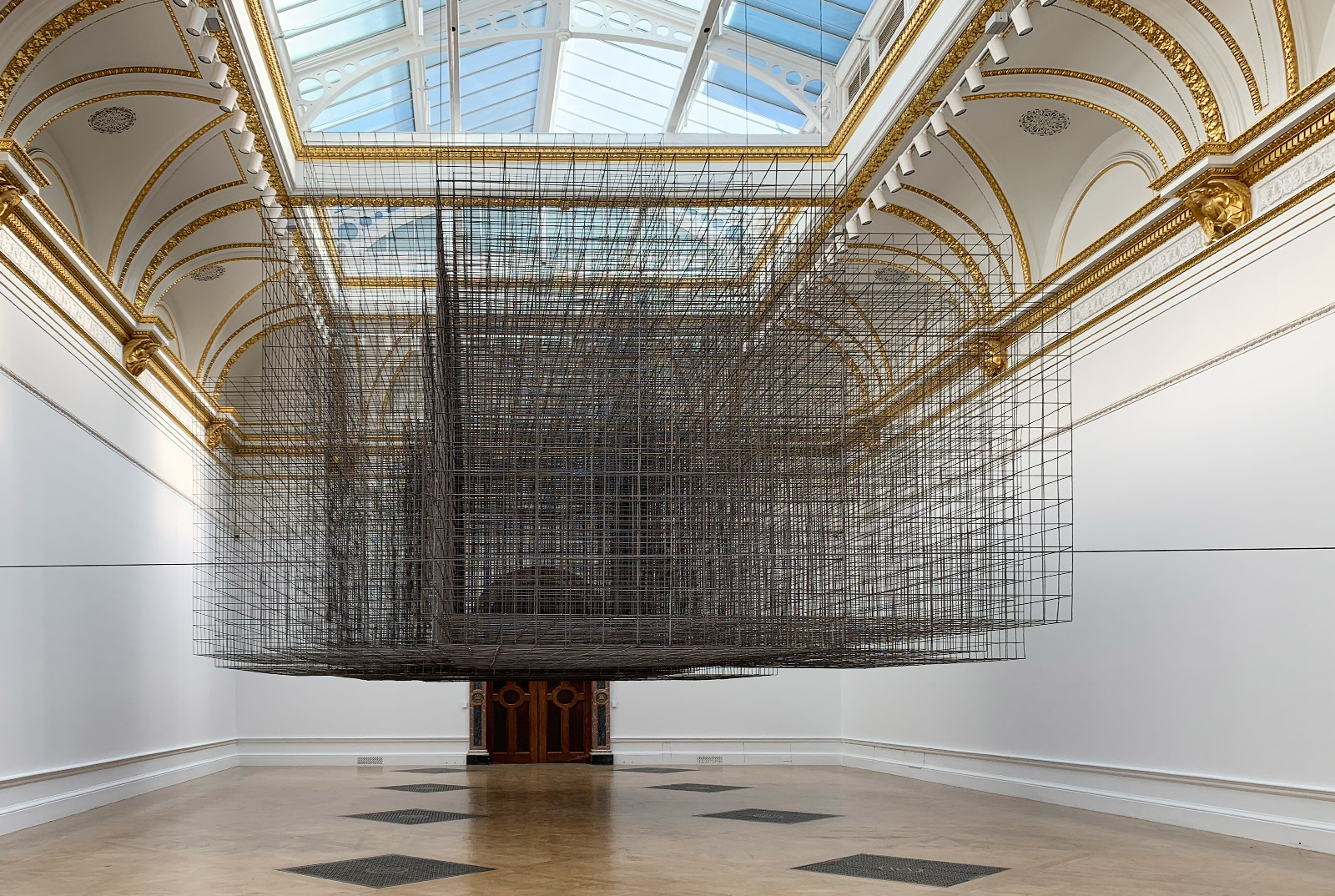
Matrix III, 2019, by Antony Gormley.
Few new works are present in the exhibition, but all feel fresh in their site-specificity, even for those who are familiar with them. Each is mesmeric in its intense physicality, playing with spatial awareness and perception – a testament to Gormley’s curatorial sensitivity. He has compared the challenges of any particular site to the resistance of marble for the sculptor who carves. No piece exhibits this more than the penultimate one, a giant steel tomb that you can physically enter, seeking pockets of light that reveal themselves as you crawl. Groping your way through the womb-like dark, you come out the other side, and – passing a room flooded with seawater – eventually, into the blinking light of the courtyard. Here, you’re reunited with the Iron Baby you saw on the way in, and brim with a new kind of kinship with it.
It’s easy to be bedazzled, and somewhat distracted, by the large format sculpture on display, but the drawings and small paintings are not to be skimmed over. Handpicked by the artist, they present some of his quieter moments, directly from his 45-year archive. They dart between philosophical musings on quantum mechanics that resemble an architect’s blueprints. Like pages ripped from a diary, they offer intimate insight into Gormley’s thinking – on urbanism, on the body, on our relationship with nature.
With such edifying themes being covered, Gormley was keen to keep a close eye on the commercial arm of the exhibition. And although you exit through the gift shop, a reading room has been planted in-between, with the intention of offering visitors pause for thought after what is a dizzying display. Gormley has edited the shop's product collection, including a stationary collaboration with Muji (Gormley uses its notebooks daily), a cycling jacket with London brand Rapha (the artist is a keen cyclist), and a limited-edition fragrance by famed nose Azzi Glasser.
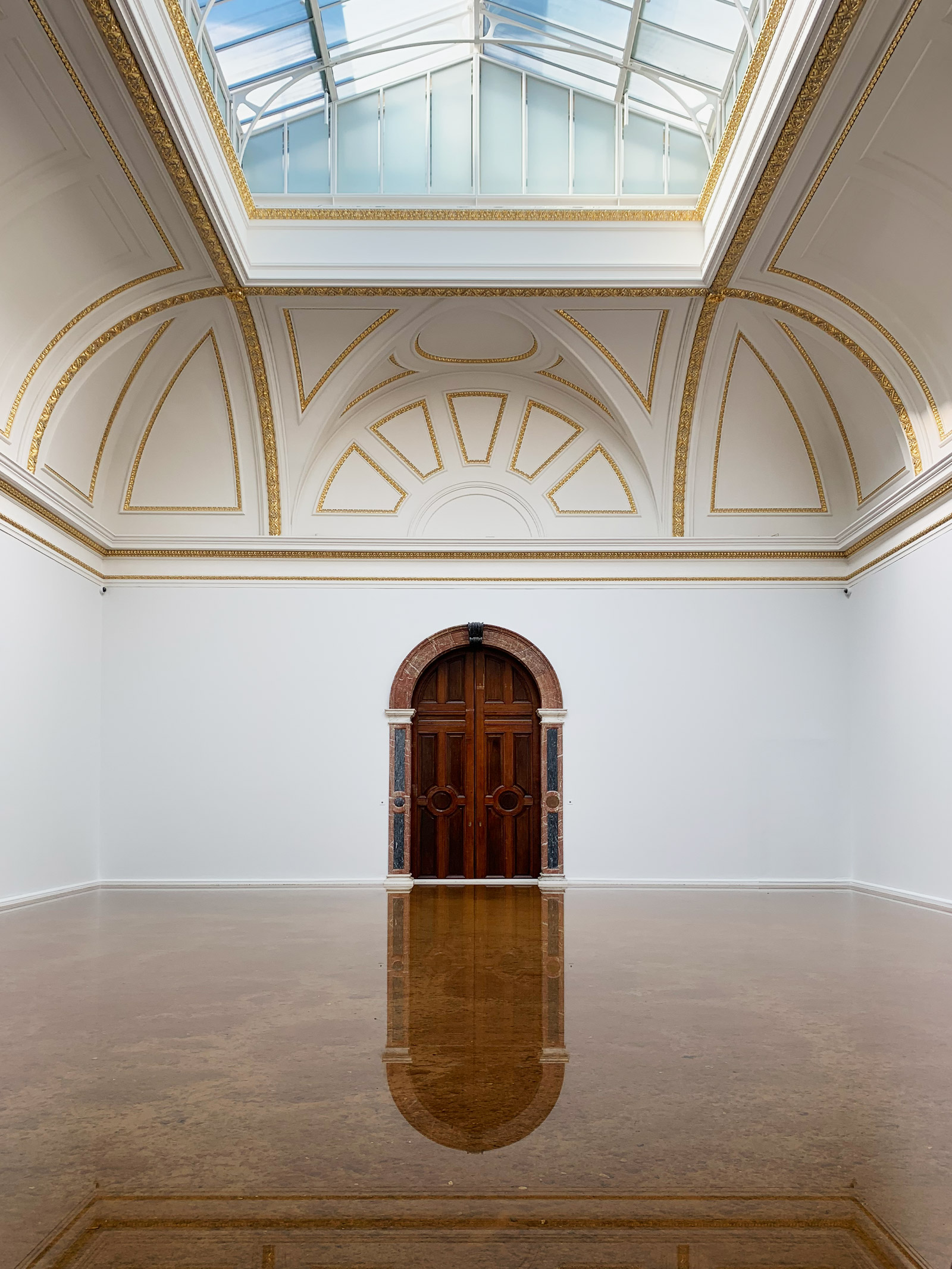
HOST, 2019, by Antony Gormley.
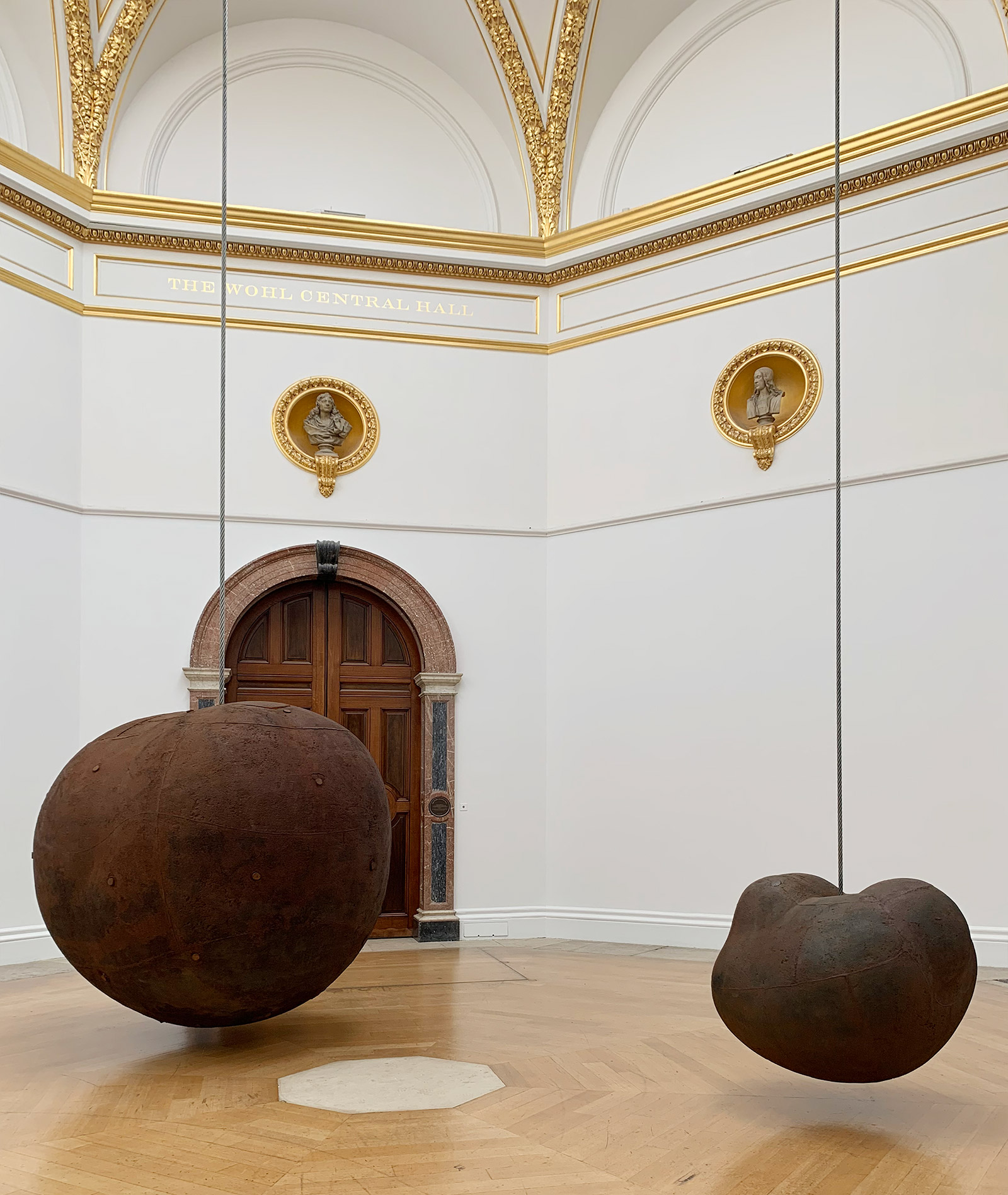
Body and Fruit, 1991/93, by Antony Gormley.
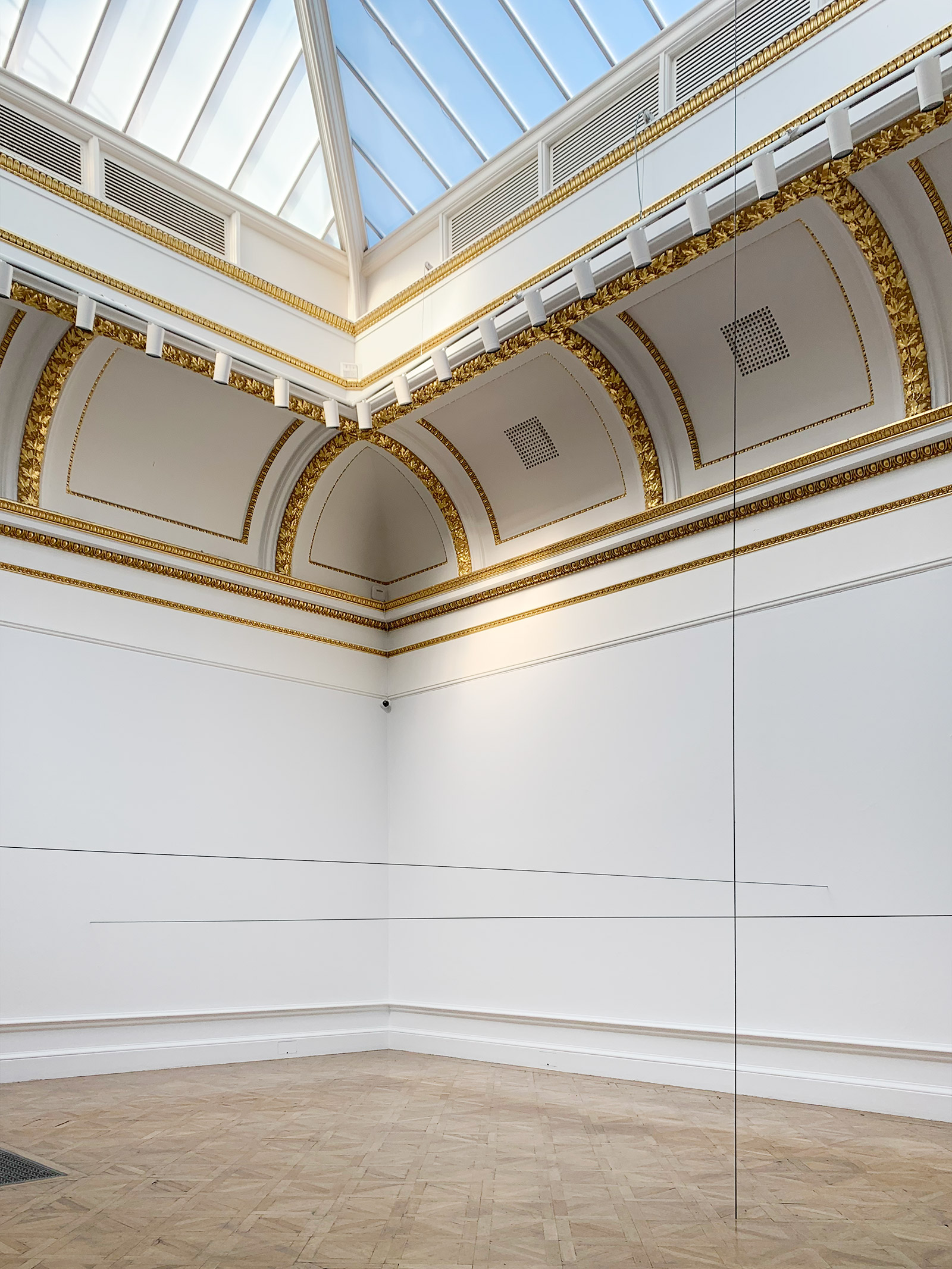
View of ‘Antony Gormley’ at the Royal Academy of Arts, London.
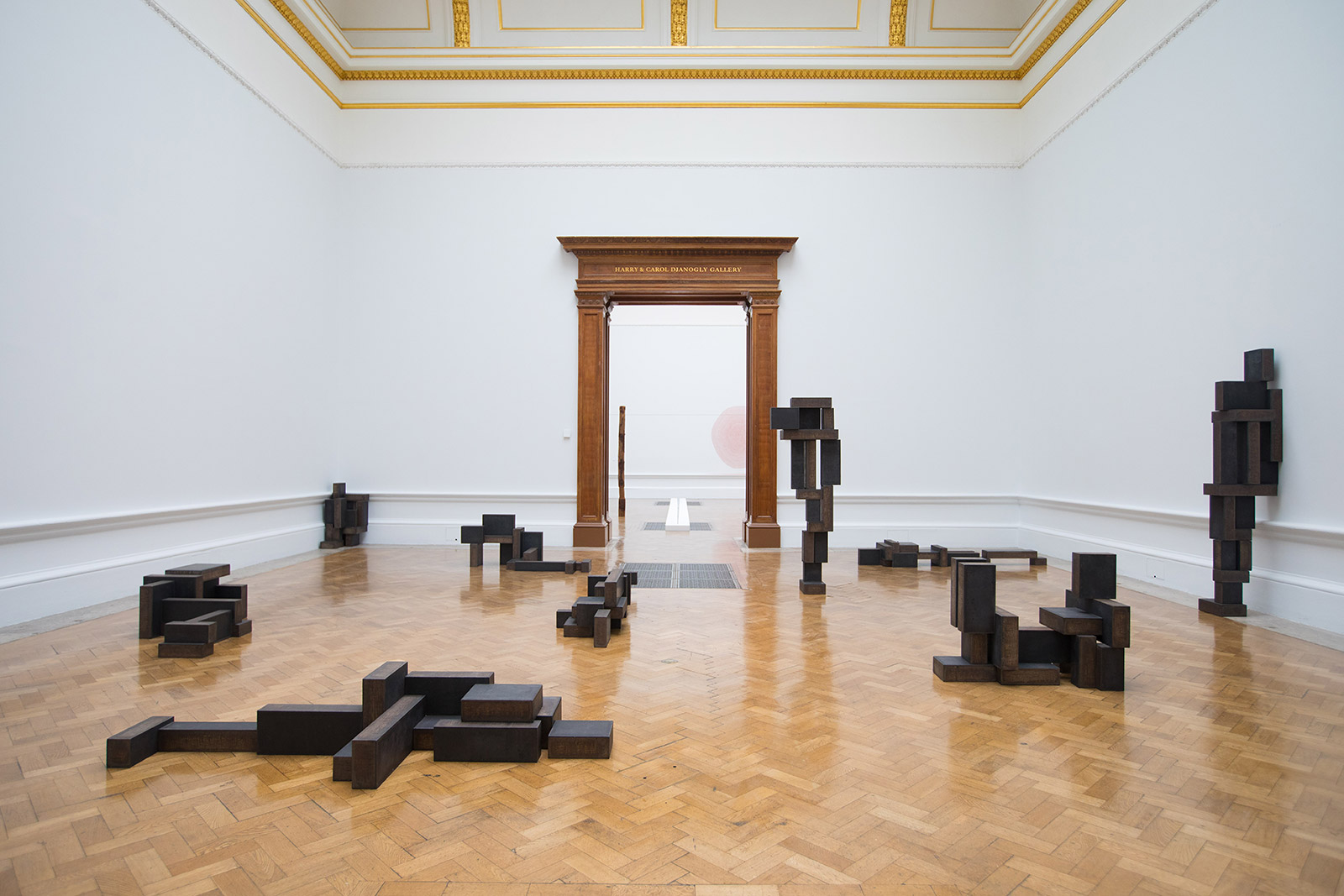
Slabworks series, 2019, by Antony Gormley. © The artist.
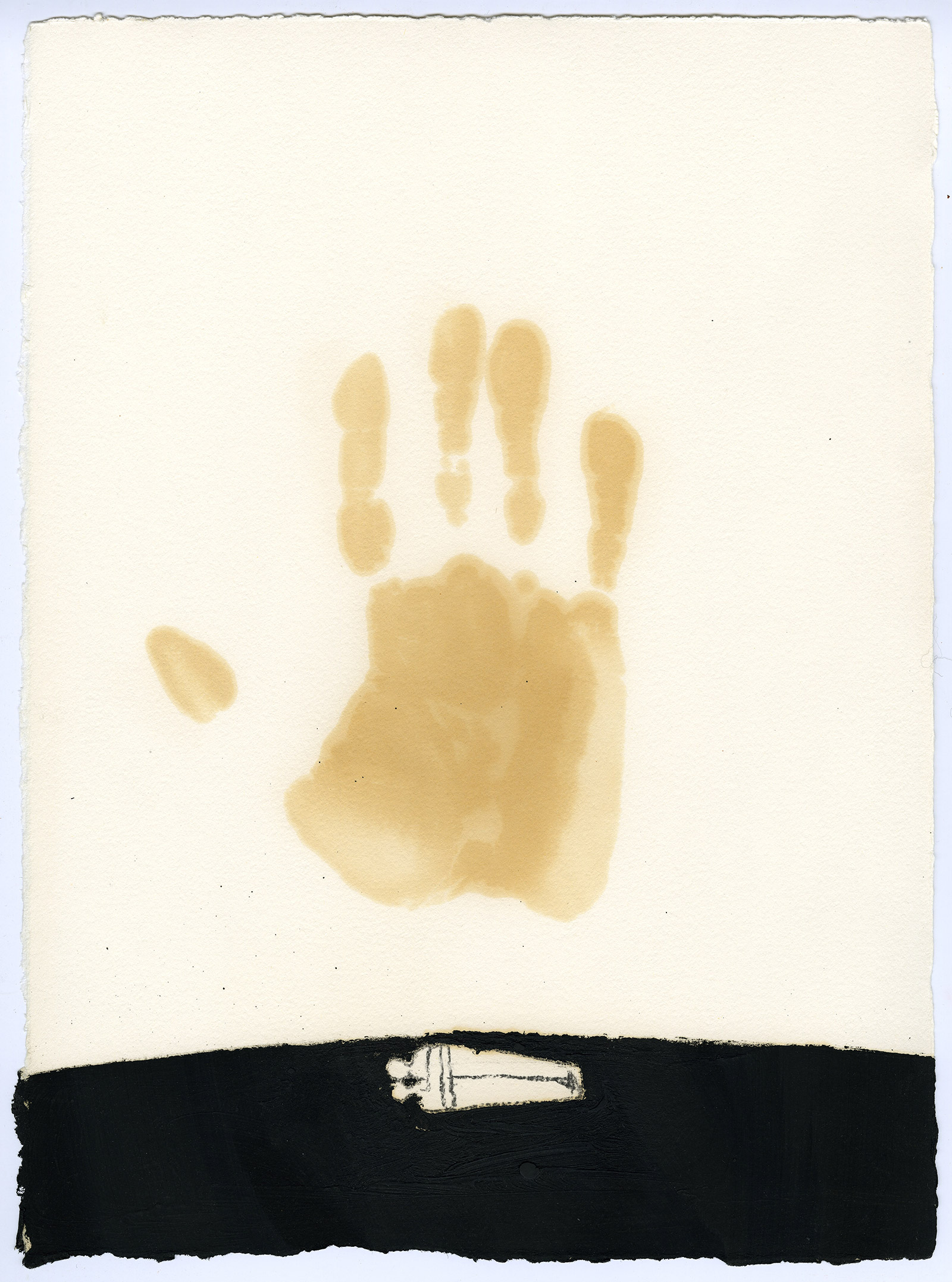
Double Moment, 1987, by Antony Gormley, black pigment, linseed oil and charcoal on paper. © The artist
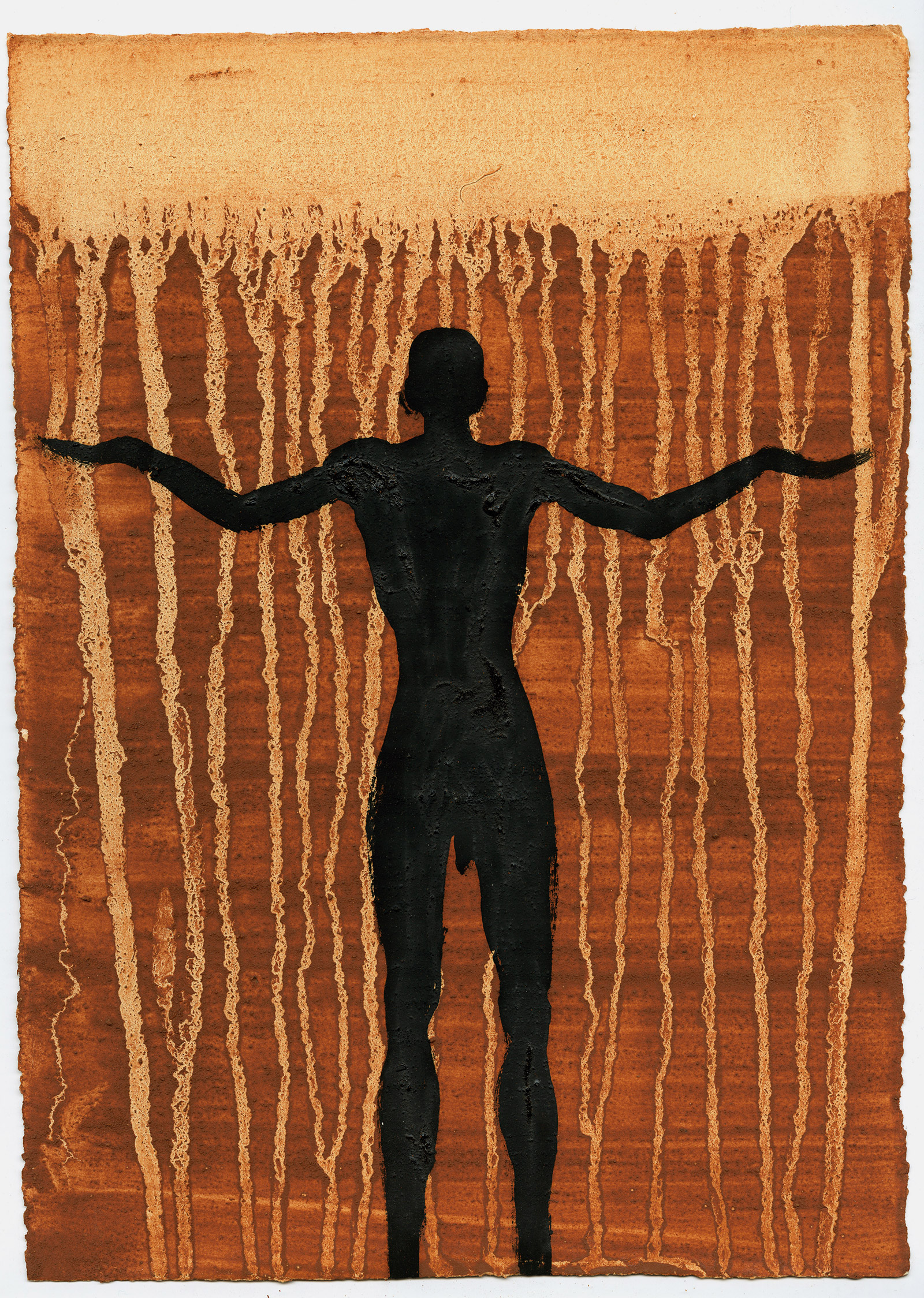
Earth, Body, Light, 1989, by Antony Gormley, earth, rabbit skin glue and black pigment on paper. © The artist
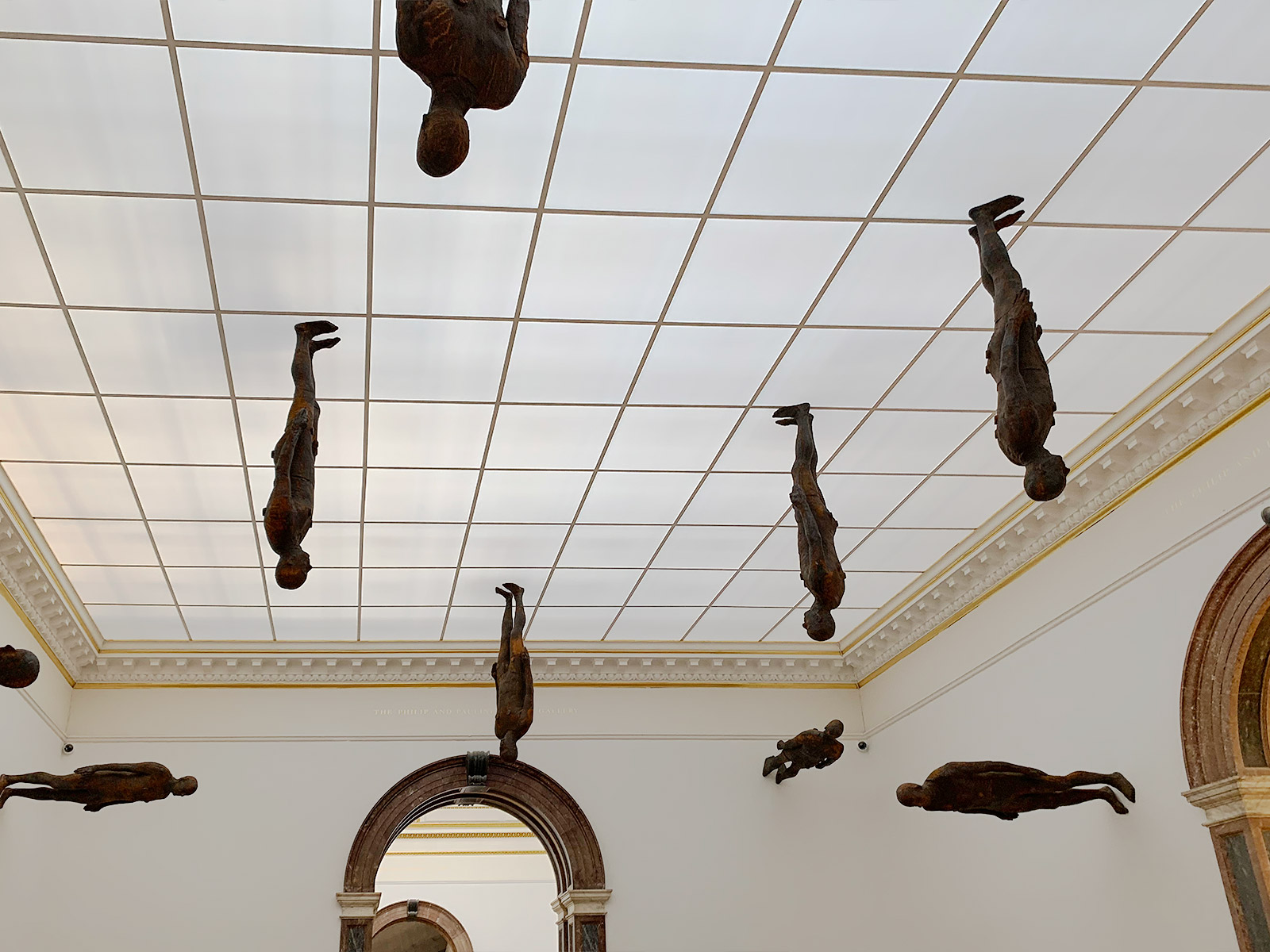
Lost Horizon I, 2008, by Antony Gormley.
INFORMATION
‘Antony Gormley’, 21 September – 3 December, Royal Academy of Arts. royalacademy.org.uk
ADDRESS
Royal Academy of Arts
Burlington House
London W1J 0BD
Receive our daily digest of inspiration, escapism and design stories from around the world direct to your inbox.
Elly Parsons is the Digital Editor of Wallpaper*, where she oversees Wallpaper.com and its social platforms. She has been with the brand since 2015 in various roles, spending time as digital writer – specialising in art, technology and contemporary culture – and as deputy digital editor. She was shortlisted for a PPA Award in 2017, has written extensively for many publications, and has contributed to three books. She is a guest lecturer in digital journalism at Goldsmiths University, London, where she also holds a masters degree in creative writing. Now, her main areas of expertise include content strategy, audience engagement, and social media.
-
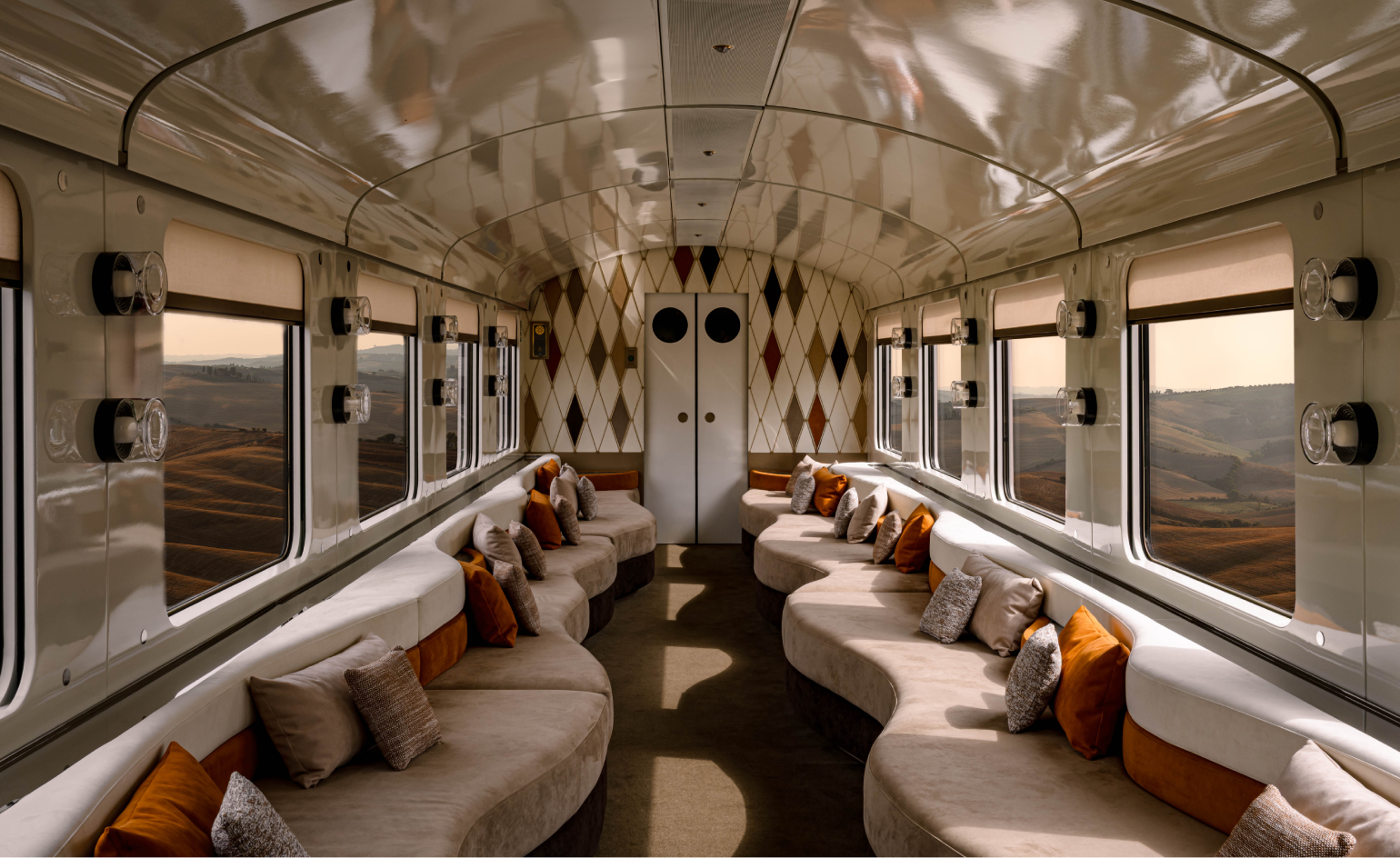 Wallpaper* Design Awards: Orient Express wins Best Reinvention 2026
Wallpaper* Design Awards: Orient Express wins Best Reinvention 2026Orient Express has held a near-mythic place in the globetrotting firmament since launching in 1883, but its recent reinvention – including its first hotel and an upcoming yacht – signals a decisive new chapter
-
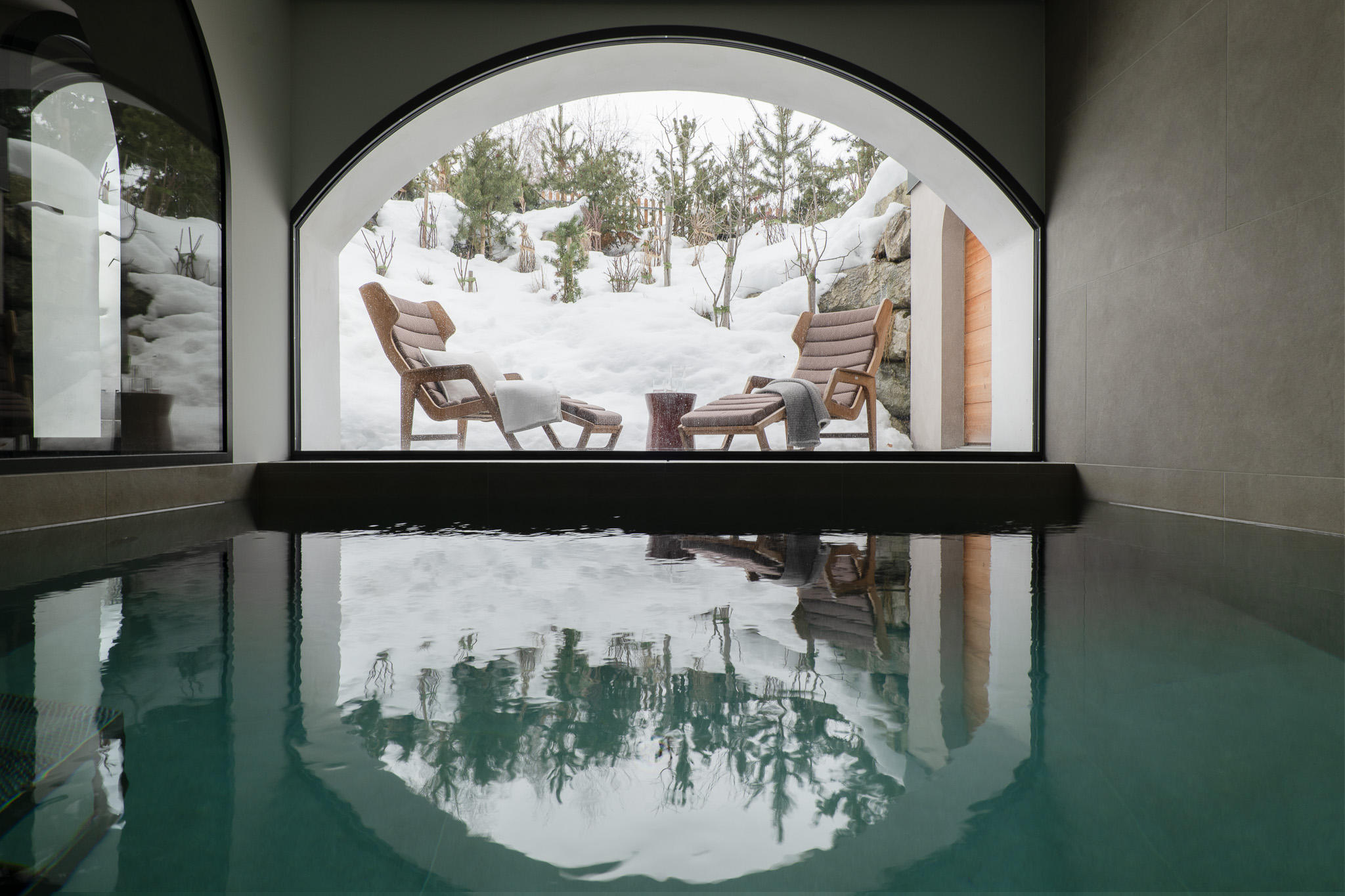 Step into a winter wonderland at this snow-covered St Moritz chalet
Step into a winter wonderland at this snow-covered St Moritz chaletA Swiss chalet reimagines Alpine living through serene architecture and Molteni&C’s refined, contemporary furnishings
-
 Wallpaper* Design Awards: why Sharan Pasricha is 2026’s Best Host
Wallpaper* Design Awards: why Sharan Pasricha is 2026’s Best HostWe salute the Indian-born, London-based hospitality entrepreneur who can’t stop thinking about ways to upgrade how we live, work and connect
-
 Out of office: The Wallpaper* editors’ picks of the week
Out of office: The Wallpaper* editors’ picks of the week'Tis the season for eating and drinking, and the Wallpaper* team embraced it wholeheartedly this week. Elsewhere: the best spot in Milan for clothing repairs and outdoor swimming in December
-
 Out of office: The Wallpaper* editors’ picks of the week
Out of office: The Wallpaper* editors’ picks of the weekFar from slowing down for the festive season, the Wallpaper* team is in full swing, hopping from events to openings this week. Sometimes work can feel like play – and we also had time for some festive cocktails and cinematic releases
-
 The Barbican is undergoing a huge revamp. Here’s what we know
The Barbican is undergoing a huge revamp. Here’s what we knowThe Barbican Centre is set to close in June 2028 for a year as part of a huge restoration plan to future-proof the brutalist Grade II-listed site
-
 Out of office: The Wallpaper* editors’ picks of the week
Out of office: The Wallpaper* editors’ picks of the weekIt’s wet, windy and wintry and, this week, the Wallpaper* team craved moments of escape. We found it in memories of the Mediterranean, flavours of Mexico, and immersions in the worlds of music and art
-
 Each mundane object tells a story at Pace’s tribute to the everyday
Each mundane object tells a story at Pace’s tribute to the everydayIn a group exhibition, ‘Monument to the Unimportant’, artists give the seemingly insignificant – from discarded clothes to weeds in cracks – a longer look
-
 Out of office: The Wallpaper* editors’ picks of the week
Out of office: The Wallpaper* editors’ picks of the weekThis week, the Wallpaper* team had its finger on the pulse of architecture, interiors and fashion – while also scooping the latest on the Radiohead reunion and London’s buzziest pizza
-
 Out of office: The Wallpaper* editors’ picks of the week
Out of office: The Wallpaper* editors’ picks of the weekIt’s been a week of escapism: daydreams of Ghana sparked by lively local projects, glimpses of Tokyo on nostalgic film rolls, and a charming foray into the heart of Christmas as the festive season kicks off in earnest
-
 Wes Anderson at the Design Museum celebrates an obsessive attention to detail
Wes Anderson at the Design Museum celebrates an obsessive attention to detail‘Wes Anderson: The Archives’ pays tribute to the American film director’s career – expect props and puppets aplenty in this comprehensive London retrospective